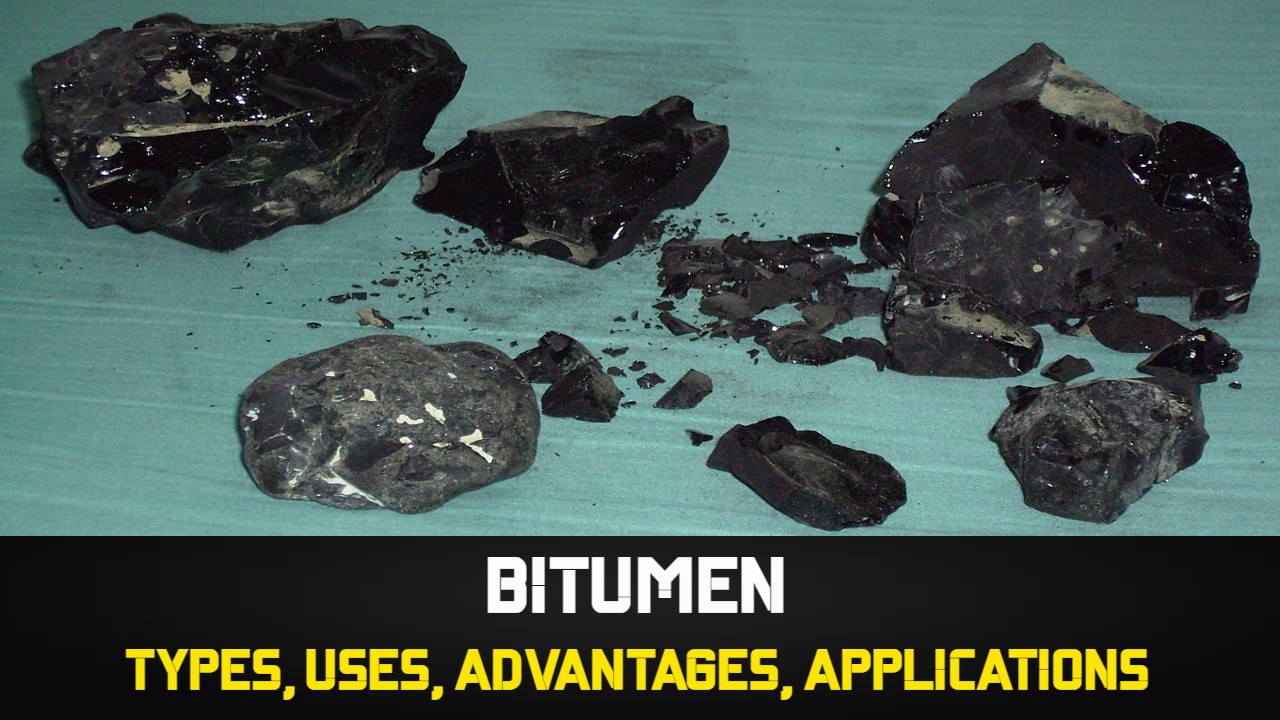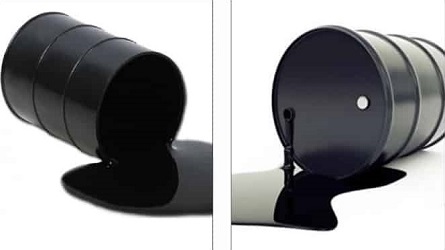Bitumen is a substance with a significant function to play in the realm of building. Bitumen has been utilized for ages in a variety of applications because it is renowned for its toughness and adaptability. This article will discuss bitumen, its kinds, applications, benefits, drawbacks, manufacturing processes, effects on the environment, safety concerns, and its potential usage in the building sector.
Contents
What is Bitumen?
In the US, bitumen, often known as asphalt, is a viscous, sticky, and dark liquid or semi-solid type of petroleum. It is either a naturally occurring material that is typically found in rock asphalt and oil sands, or it may be made by refining crude oil. Due to its distinct characteristics, bitumen is perfect for use in a variety of building applications.
Types of Bitumen
Based on a variety of qualities and traits, bitumen may be divided into numerous categories. The penetration grade, which gauges the hardness or softness of bitumen, is the basis for the most widely used categorization scheme. The performance grading (PG) system, which is more often used in some countries, particularly the United States, provides the basis for another categorization scheme. Let’s examine these bitumen varieties in further detail:
Penetration Grade Bitumen
Based on its penetration value, which measures the depth (in tenths of a millimeter) to which a standard needle penetrates the bitumen sample under particular circumstances, penetration grade bitumen is categorized. The penetration value reveals the hardness or softness of the bitumen. The bitumen becomes harder as the penetration value decreases and vice versa.
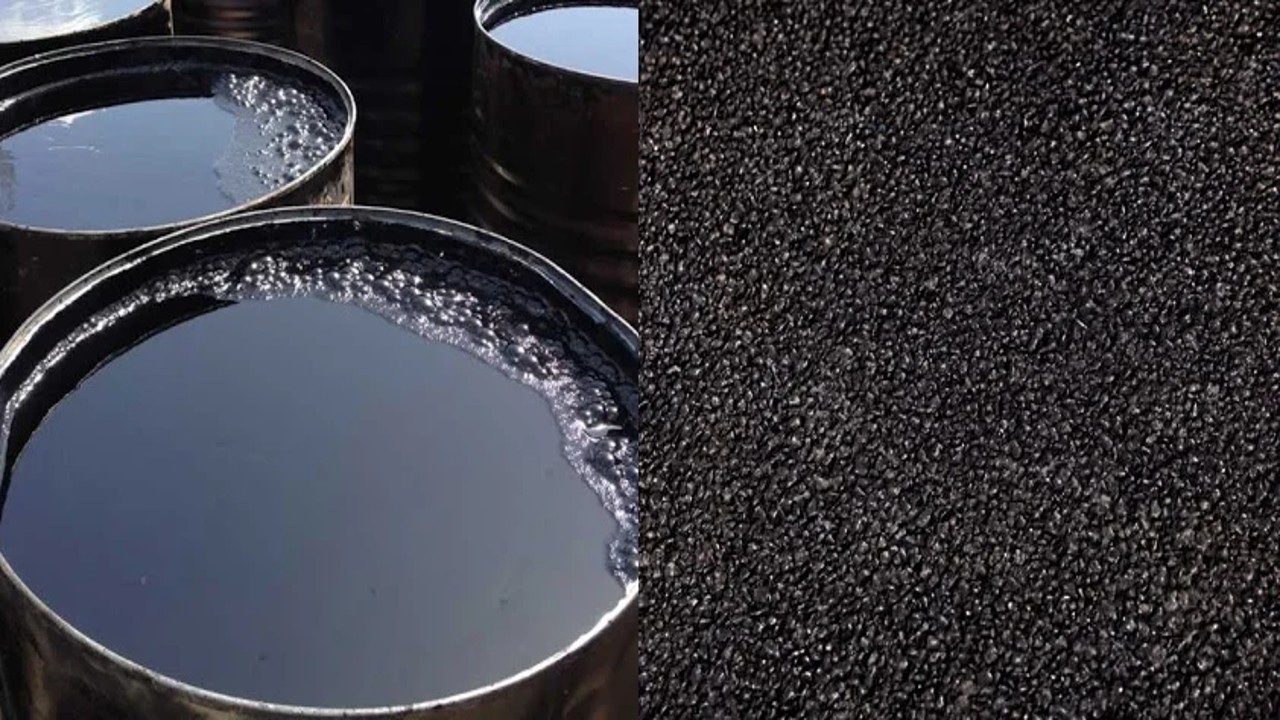
Penetration Grades:
- 85/100: Very hard bitumen, suitable for high-traffic roads and areas with extreme weather conditions.
- 100/120: Hard bitumen, used for heavy-duty pavements, airports, and industrial areas.
- 120/150: Medium-hard bitumen, used in general road construction and other applications.
- 150/200: Soft bitumen, used for low-traffic roads and areas with mild weather conditions.
- 200/300: Very soft bitumen, used for specialized applications like adhesives and sealants.
Performance Grade (PG) Bitumen
Based on how bitumen performs at various temperatures, the PG system categorizes it. In the United States and other places with extreme climatic fluctuations, it is commonly utilized. Bitumen is divided into many grades according to the PG system, including PG 58-28, PG 64-22, PG 70-10, etc.
- The bitumen’s ability to withstand high temperatures (in Celsius) without being too soft or rutting is represented by the second number.
For instance, PG 64-22 denotes that the bitumen will not too soften even at 64°C and will stay flexible down to -22°C.
Viscosity-Graded Bitumen
Bitumen that has been viscosity-graded is categorized according to its kinematic viscosity, which gauges the fluid’s flow characteristics at a certain temperature. The bitumen is more viscous the higher the viscosity grade. For unique applications where the flow properties are crucial, viscosity-graded bitumen is employed.
Cutback Bitumen
Bitumen is combined with a volatile solvent, such as kerosene or gasoline, to create cutback bitumen. The viscosity of the bitumen is decreased during this procedure, making it simpler to handle and apply. The bitumen hardens and creates a waterproof covering when the solvent has evaporated. In cold climates or where a quick setting is necessary, cutback bitumen is employed.
Emulsified Bitumen
Bitumen is mixed with water and an emulsifying agent to make emulsified bitumen, which is a stable combination. This kind of bitumen may be utilized at lower temperatures and is simple to handle. Emulsified bitumen is frequently used for tack coatings, surface treatments, and in distant locations without access to hot-mix facilities.
Various categorization schemes and features have led to the identification of these as some of the primary bitumen varieties. The type of bitumen to be used will depend on the application in question as well as the local climate.
Also Read: Intensive Review of Major 10 Bitumen Tests
Uses of Bitumen
Due to its special qualities and attributes, bitumen, commonly known as asphalt, is used in a broad variety of sectors. The principal uses of bitumen are listed below in further detail:
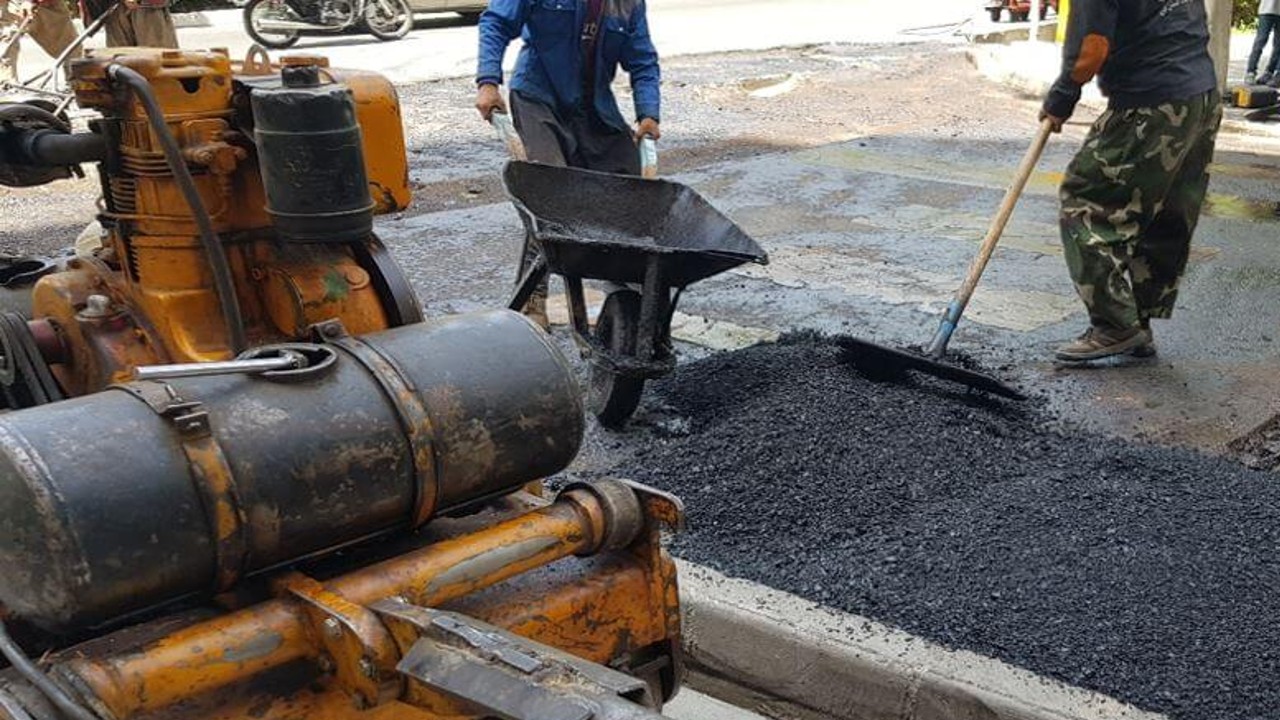
Road Construction
The building of roads is one of the most frequent applications of bitumen. The main substance used to build roads and highways is asphalt concrete, which uses bitumen as a binder. It has strong binding qualities that make sure the particles in the asphalt mix are securely kept together. Bitumen also helps the road surface be flexible and durable, enabling it to handle severe traffic loads and a variety of weather conditions.
Waterproofing
In the building sector, bitumen is frequently utilized for waterproofing purposes. It is used as a waterproofing membrane to keep water out of basements, foundations, and other structures. Bitumen’s waterproofing abilities aid in preventing water damage, safeguarding structural integrity, and extending the life of structures and infrastructure.
Roofing
Bitumen is used in the roofing industry to create roofing products including bituminous shingles and roofing felt. The roof is shielded from rain, UV rays, and temperature changes thanks to the outstanding weather resilience of these roofing materials. Both residential and commercial structures frequently use bitumen roofs.
Pavement Sealing and Maintenance
Pavements, such as parking lots and driveways, are coated with bitumen-based sealants and coatings to shield them against weathering, oxidation, and water penetration. Bitumen sealcoating contributes to the pavement’s lifespan extension, maintenance cost reduction, and aesthetic improvement.
Airport Runways and Taxiways
Because it can support enormous airplane weights and is resistant to deformation, bitumen is utilized in the building of airport runways and taxiways. Bitumen-based mixes offer a sturdy and secure platform for moving airplanes.
Bridge Deck Waterproofing
To prevent water infiltration, corrosion, and freeze-thaw damage on bridge decks and viaducts, bitumen-based waterproofing solutions are used. This helps the bridges last longer and maintain their structural integrity.
Pipe Coating
Underground pipes, such as those used for sewage systems, oil and gas pipelines, and water pipelines, are coated with bitumen. Bitumen pipe coatings enhance the life of the pipes and prevent corrosion and abrasion, ensuring effective fluid conveyance.
Soundproofing
Bitumen is a component of materials used in automobiles and structures to reduce noise. Bituminous soundproofing layers and membranes aid in reducing noise transmission, creating quieter and more pleasant interior environments.
Industrial Applications
The production of roofing materials, adhesives, sealants, and compounds for electrical cable jointing are only a few industrial uses for bitumen.
Overall, bitumen is critical to the building of contemporary infrastructure because it offers vital qualities including waterproofing, binding, flexibility, and durability. Due to its adaptability, it is a fundamental component in a vast array of applications, assuring the long-term performance and security of surfaces and structures.
Also Read: Self Compacting Concrete (SCC) – Benefits, Applications, PPT
Advantages of Bitumen
Due to its special qualities and numerous benefits, bitumen is a substance that is widely employed across a variety of sectors. The benefits of bitumen are listed in detail below:
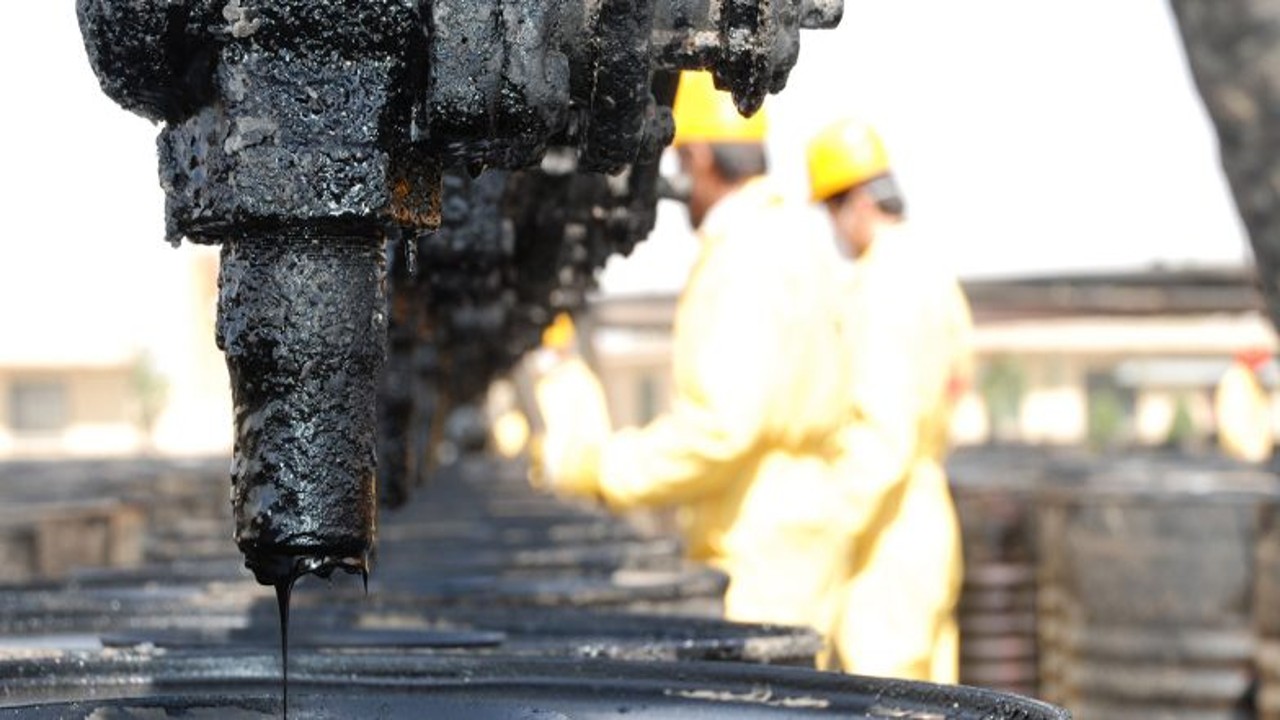
Excellent Binding Properties
Bitumen is a great material for building roads because of its outstanding adhesive and binding qualities. It successfully fuses particles to create asphalt concrete, creating a strong and resilient road surface.
Waterproofing Abilities
Bitumen is a superb waterproofing substance because it is water-impermeable. It stops water from leaking through when used in roofing or pavement applications, preventing water damage to the underlying buildings.
Flexibility and Elasticity
Because bitumen is very elastic and flexible, it can endure the stress and strain brought on by changes in temperature and traffic volume. Since it can withstand cracking and distortion, it may be used in areas with harsh weather.
Resistance to Chemicals
Salts, acids, and alkalis are just a few of the numerous substances to which bitumen is very resistant. When bitumen is utilized in industrial settings where exposure to corrosive chemicals is widespread, this feature is helpful.
Versatility
Bitumen can be changed to improve its performance for certain purposes by adding polymers or other additives. For high-stress places like airports and roads, modified bitumen can provide better durability, rutting resistance, and fatigue resistance.
Rapid Construction and Maintenance
Road and pavement construction may be completed more quickly with bi-tumen based materials since they are simple to apply and compact. Additionally, bi-tumen surfaces require very little care because damaged areas may be effectively restored by reapplying bi-tumen mixes.
Cost-Effective
Compared to other materials used in the building and maintenance of roads, bi-tumen is more affordable. It is widely accessible in most areas, and the ease of its production method adds to its affordability.
Recyclability
Bi-tumen is an ecologically favorable material for road building since it can be recycled and used again in asphalt mixes. The need for fresh raw materials can be decreased by incorporating reclaimed asphalt pavement (RAP) into new combinations.
Skid Resistance
Especially in wet or snowy circumstances, bi-tumen surfaces can be constructed to offer sufficient skid resistance, boosting vehicle traction, and safety.
Sound Absorption
Bi-tumen’s thick and viscoelastic composition helps to absorb sound, lowering road noise and enhancing driving comfort.
Low Embodied Energy
In comparison to other building materials, bitumen has a comparatively low embodied energy, requiring less energy for both manufacturing and transportation.
Durability and Longevity
Bitumen surfaces that have been properly planned and maintained have a long service life, which lowers overall maintenance costs and increases the lifespan of roads and pavements.
Challenges in Using Bitumen
Although bi-tumen is a flexible and often used substance, there are a number of difficulties in using it. These difficulties may have an effect on different businesses and uses for bi-tumen. Among the principal difficulties are:
Temperature Sensitivity
Bi-tumen has a strong temperature sensitivity, changing from soft and fluid in hot weather to stiff and rigid in cold. This sensitivity to temperature can have an impact on how well asphalt roads work since it may cause rutting under heavy traffic in hot areas or cracking in cold climates. To deal with these temperature related issues, specialized bi-tumen mixtures and additives are frequently utilized.
Aging and Oxidation
Bi-tumen may age and oxidize over time as a result of exposure to air, sunshine, and other environmental elements. As a result, the bi-tumen may fracture and lose some of its elasticity, becoming more brittle. Bitumen can be altered using polymers or other additions to lessen these effects and increase its resilience to oxidation and aging.
Rutting and Deformation
Bi-tumen roads may rut and distort with time in regions with strong loads and high traffic volumes. Rutting is the persistent deformation of the road surface brought on by repeated wheel loads. Rutting and deformation may be reduced with the use of proper bi-tumen formulations and good road design.
Environmental Concerns
Bi-tumen is a petroleum based substance, and the extraction and production processes may have an adverse effect on the environment by destroying habitats, polluting the air, and emitting greenhouse gases. Furthermore, if bi-tumen is not adequately managed, some chemicals may seep into the land and water. As a result, there is rising interest in creating more ecologically sound and sustainable alternatives to bi-tumen.
Recycling and Disposal
Due to the complexity of the substance and the inclusion of many additives, recycling bi-tumen based goods might be difficult. The construction industry is always looking for efficient and effective ways to recycle asphalt and other bi-tumen based materials. The improper disposal of garbage containing bi-tumen can potentially harm the environment.
Maintenance and Repairs
For bi-tumen roads and buildings to last and operate well, regular maintenance and repairs are required. However, upkeep may be expensive and inconvenient, especially in places with high traffic. The frequency of maintenance and repairs can be decreased by creating bi-tumen mixes that are more resilient and long-lasting.
Health and Safety Risks
Bi-tumen handling and application expose workers to sweltering heat and potentially dangerous fumes. If the proper safety precautions and protective gear are not taken, bi-tumen sector workers may run health and safety hazards.
Quality Control
It might be difficult to maintain quality in bi-tumen manufacturing and construction. The functionality and characteristics of bi-tumen can be impacted by variations in raw materials, manufacturing procedures, and environmental factors. To make sure that bi-tumen products adhere to the essential specifications and performance criteria, strict quality control techniques are needed.
Despite these difficulties, continued research and technological developments are steadily enhancing the functionality and sustainability of bi-tumen based products. By addressing these issues, bi-tumen may be used in a variety of sectors in a safer, more durable, and ecologically responsible manner.
How Bitumen is Produced
Bi-tumen, a petroleum based substance, is produced by distilling crude oil. To extract bitumen from other components in crude oil during production, numerous refining methods are used. Here is a description of the process for making bi-tumen:
Crude Oil Extraction: Crude oil contains bi-tumen, which is a naturally occurring substance. Through the drilling of wells, crude oil is retrieved from subsurface reserves. It contains a variety of contaminants and hydrocarbons.
Distillation: After being extracted, crude oil is sent to a refinery for further processing. The crude oil passes through a procedure called fractional distillation in the refinery. In this procedure, a sizable distillation column is used to heat the crude oil. Since the various components of the crude oil have different boiling points, they begin to evaporate as the temperature within the distillation column rises.
Separation: As the temperature drops, the vaporized hydrocarbons ascend inside the distillation column and condense back into liquid form at various heights. Trays or packing materials are included in the column to make it easier to separate the individual components. Bi-tumen, along with other heavy fractions like fuel oil, residue, and wax, condenses and collects at the bottom of the distillation column in a particular temperature range.
Further Processing: The bi-tumen containing collected heavy fraction is further treated to get rid of impurities and raise the bitumen’s grade. To generate different grades of bi-tumen with certain qualities, further refining procedures such solvent deasphalting, vacuum distillation, or coking may be used, depending on the intended end-use.
Blending and Additives: Bi-tumen may be combined with other substances or additives to satisfy certain performance needs. To generate polymer-modified bitumen, which improves its qualities like elasticity and resistance to deformation, polymers like styrene-butadiene-styrene (SBS) or ethylene-vinyl acetate (EVA) can be added.
Packaging and Storage: The finished bi-tumen product is often delivered to storage facilities in bulk or packed in containers by tankers or lorries. To keep bi-tumen at the correct viscosity and handling ease, it is kept at high temperatures.
Source: Infinity Galaxy
The Environmental Impact of Bitumen
Bi-tumen extraction, processing, and application have a substantial negative influence on the environment, as do its production and consumption. The following are some of the main environmental issues with bi-tumen:
Habitat Disruption
Bi-tumen is frequently extracted via surface mining or in-situ techniques, which can result in the removal of vast tracts of natural habitat. Because of the disruption of ecosystems and potential loss of biodiversity, this has an impact on the plant and animal species that depend on these environments.
Greenhouse Gas Emissions
It takes a lot of energy to collect, refine, and transport bi-tumen, which increases greenhouse gas emissions. Carbon dioxide (CO2) and other greenhouse gases are released throughout these processes as a result of the combustion of fossil fuels, which contributes to climate change and global warming.
Air Pollution
When bi-tumen is refined and processed, volatile organic compounds (VOCs) and other air pollutants may be released into the sky. These pollutants can negatively impact air quality and human health as well as contribute to the creation of smog.
Water Pollution
Groundwater and surface water may be contaminated by runoff from bi-tumen extraction sites and building projects that carries contaminants into water bodies. Aquatic environments may be impacted by the chemicals that leach from bi-tumen based products.
Land Reclamation Challenges
Large open pits created by surface mining for bi-tumen extraction may need to be reclaimed when mining is finished. It might be tough and time-consuming to return the land to its previous condition.
Oil Spills and Leaks
Bi-tumen is susceptible to spills and leaks during storage and transportation, which might have detrimental effects on the environment. Because bi-tumen does not float like conventional oil and may sink, it can be difficult to manage and recover when it spills into water bodies.
Wildlife Impacts
Wildlife may be impacted both directly and indirectly by oil spills and habitat damage. Because to habitat loss, disturbance of their natural habits, and exposure to hazardous chemicals, aquatic and terrestrial animals might suffer.
Carbon Intensity
Due to the energy needed for its extraction and processing, bi-tumen is regarded as a resource with a high carbon footprint. The carbon intensity of bi-tumen extraction is an issue as the world moves toward cleaner and more sustainable energy sources.
The effects on the environment are being addressed in certain ways. For instance, solutions are being developed to minimize greenhouse gas emissions during the manufacture and transportation of bi-tumen. There is also continuing research into recycling and more environmentally friendly alternatives to conventional bi-tumen-based goods.
Bi-tumen’s environmental effect may be significantly reduced by following environmental laws, adopting sustainable practices, and raising public awareness. Finding strategies to reduce the environmental impact of bi-tumen production and use is a concern as the globe works to address climate change and environmental deterioration.
Safety Considerations in Handling Bitumen
Bi-tumen’s high temperature, the possibility of burns, and exposure to hazardous gases make handling it extremely dangerous. When dealing with bi-tumen, keep these important safety factors in mind:
Personal Protective Equipment (PPE)
Anyone working with bi-tumen should wear the proper PPE to safeguard oneself from any potential risks. This includes long-sleeved gear, heat-resistant boots, safety goggles or face shields, and heat-resistant gloves. When handling hot bi-tumen, specialized heat-resistant clothes could be required.
Hot Temperature Precautions
To keep bi-tumen fluid, it is often handled at high temperatures. Bi-tumen may burn severely if it comes into direct contact with workers, hence care should be taken to avoid this. Workers should get enough training to ensure they are aware of the dangers of handling hot materials.
Ventilation
When heated, bi-tumen particularly can emit toxic gases. For fumes to be dispersed and air quality to be maintained, work spaces must have enough ventilation. It is best to avoid working with bi-tumen in small places without adequate ventilation and gas detection equipment.
Emergency Planning
To deal with possible bi-tumen accidents or leaks, a strategy should be in place. This plan should outline how spills should be handled, how to treat burns, and when to evacuate the area.
Storage and Handling
Bi-tumen needs to be handled and stored in tanks and containers that are suitable for high-temperature materials. To avoid misunderstanding with other materials, safety precautions including labeling should be observed.
Training
All employees who work with bi-tumen should have the appropriate training. This involves being aware of the risks connected with bi-tumen, using PPE properly, and following safe handling guidelines and emergency response methods.
Hot Work Permit
A hot work permit system should be put in place for operations using hot bi-tumen to guarantee that work is done safely and in accordance with safety regulations.
Equipment Maintenance
To avoid accidents and guarantee safe operation, equipment like bi-tumen heaters, pumps, and tanks need to undergo routine maintenance and inspection.
Spill Prevention and Control
To reduce the danger of unintentional spills, appropriate spill prevention measures including drip trays and spill containment systems should be in place. Workers should get training on proper spill cleanup procedures.
First Aid and Medical Facilities
On-site first aid facilities should be adequate, and staff members should be taught to handle burns and other injuries caused by handling bi-tumen right away.
Handwashing and Hygiene
To avoid inadvertent consumption or exposure to bi-tumen leftovers, workers should maintain basic hygiene, including appropriate handwashing.
Future of Bitumen
Bi-tumen will remain a crucial component as the building sector expands. To further lessen bi-tumen’s influence on the environment, research is being done to create more environmentally sound and sustainable versions of the substance.
Conclusion
The importance of bi-tumen to the building sector cannot be overstated. Due to its excellent qualities, it is a necessary component for many projects, including building roads, waterproofing, and roofing. Even while there are difficulties, continued attempts to enhance manufacturing techniques and sustainability will guarantee that bi-tumen stays a significant role in construction for years to come.
Frequently Asked Questions (FAQs)
Is bi-tumen the same as asphalt?
In the US, bi-tumen and asphalt are frequently used interchangeably, however they are not completely interchangeable. Asphalt is produced using bi-tumen as a binding agent.
Can bi-tumen be recycled?
Yes, Bi-tumen is an environmentally favorable choice since it can be recycled and used again in the building of roads.
What is the difference between natural and petroleum bi-tumen?
Petroleum bi-tumen is a byproduct of the refinement of crude oil, whereas natural bitumen occurs naturally. They could differ in composition yet have comparable characteristics.
Are there any health risks associated with handling bi-tumen?
Yes, Due to its high temperature, handling hot bi-tumën can be hazardous to one’s health. To avoid injuries, proper safety procedures should be followed.
What is the lifespan of a bi-tumën road?
Depending on traffic volume and environmental factors, a well-maintained bi-tumën road can survive for more than 20 years.
